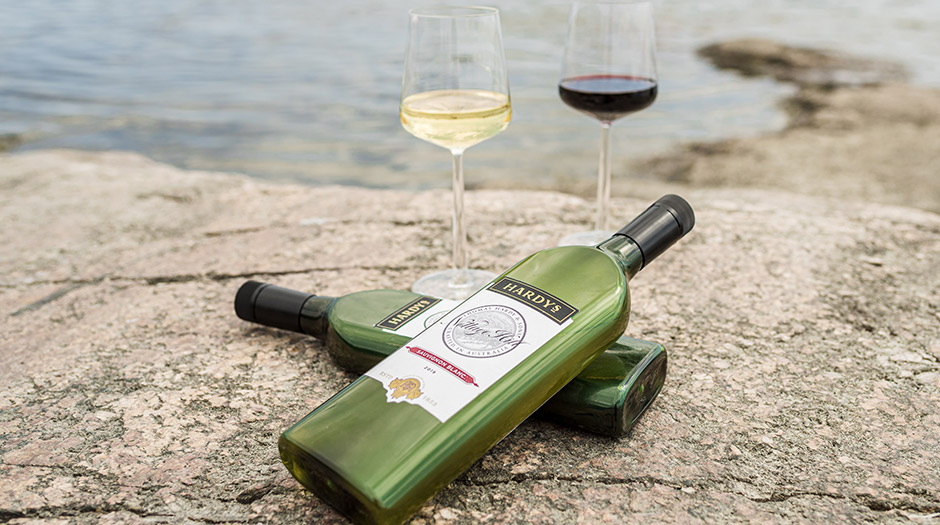Garçon Wines has created a slim, recycled plastic wine bottle design. The bottles can easily be stacked together when packaged. They are also designed to be slim enough to fit into an average UK letterbox.
Company: Garçon Wines
Polymer: 100 per cent recycled PET plastic.
More Information: https://www.garconwines.com/sustainability-in-wine/healthier-planet

Photo credit: Aino Maaranta, Viinilinna.
What is the waste reduction from this product in percentage terms?
This product reduces waste by using 100 per cent recycled plastic. The secondary packaging is made from 100 per cent sustainably sourced cardboard.
What product does this alternative replace?
This product is an advancement of the traditional round glass wine bottles; holding the same 750ml volume.
In comparison, this product is 40 per cent more spatially efficient than traditional round bottles. The flat recycled plastic bottle is both easier to transport, and less likely to break in transit.
The flat shape means the bottles pack like books into cases, which has allowed Garçon Wines to achieve up to 91 per cent more wine on a single UK sized pallet.

Photo Credit: Garçon Wines.
How much plastic does this product save from waste?
This product saves PET plastic waste from landfill by creating a new product from pre-existing material. Furthermore, the bottles have been designed to be easily recycled again, extending the plastic’s lifespan.
What statistics are available to demonstrate its environmental impact?
Firstly, the bottles are 87 per cent lighter than the average glass bottle and 40 per cent spatially smaller. Through lightweighting and the ease of transporting by efficient packing; both logistical costs and CO2 emissions are minimised.
Secondly, using 100 per cent recycled PET in the bottles allows significant energy and CO2 savings versus standard PET and glass. For example, it takes 90 per cent less energy and causes 79 per cent lower greenhouse gas emissions to produce recycled PET versus virgin PET.
If applicable, what percentage of the product is made from recycled materials?
Garçon wine bottles are made from 100 per cent recycled PET plastic.
How does the product meet UN Sustainability Development Goals 12: Responsible consumption and production?
This product aligns with Sustainability Development Goal 12.5: By 2030, substantially reduce waste generation through prevention, reduction, recycling and reuse.
It uses 100 per cent recycled plastic and supports recycling across its lifespan.
Furthermore, Garçon Wines is aiming to reduce waste caused from transport mishaps of glass bottles. The company is also reducing the energy needed to produce glass wine bottles, and subsequently reducing CO2 emissions.
The efficient design allows for the transportation of higher volumes of wine per pallet, meaning fewer trucks are required.
How does Garçon Wines provide consumers with information about its product’s sustainability?
The Garçon Wines website provides customers with accessible information regarding their product’s sustainability.
The bottles’ cardboard packaging also provides recycling information and back labels on the bottle highlight the 100 per cent recycled material and encourage recycling after the wine is consumed.
What independent verification have the environmental claims of Garçon Wines products been certified to?
General research suggests that the use of recycled plastics and light weighting reduce energy use and carbon footprint. Imperial College’s white paper study notes that PET is an environmentally effective material. They are actively exploring life cycle analysis of the bottles so as to be able to produce results that can be shared to the benefit of the wine industry as well as the broader packaging industry.
